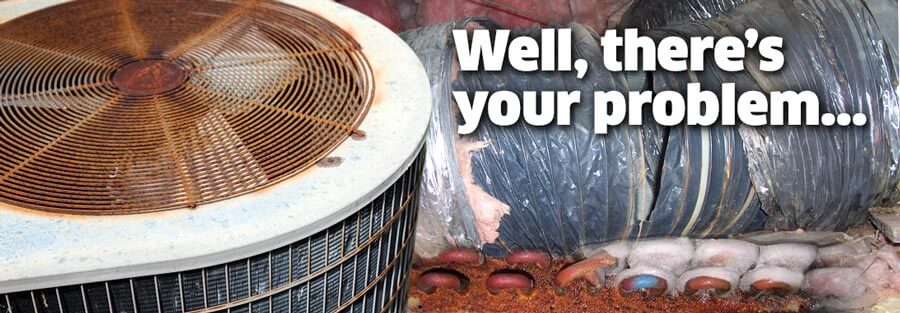Home buying is exciting; fixer-uppers, new construction, newly renovated…it is just plain fun to catch a glimpse of what your life would be like in a new house. With that being said, I have never heard anyone say, “I love this house, but the HVAC system is horrible.” Often, the HVAC system is the last thing on your mind, but it shouldn’t be. The HVAC system is responsible for creating a healthy indoor environment and keeping your family comfortable. It is also worth mentioning that the HVAC system accounts for nearly 50% of energy use and dollars spent each month. Consider this blog a short introduction to heating and cooling systems and what to look for when buying a house because the benefits of a functioning HVAC system go well beyond your physical comfort.
The Basics: Existing Homes. Look. Listen, and Feel.
Look: I hate to say it, but air conditioners do not age gracefully. The majority of HVAC systems are built to last 10-15 years and that is with proper annual maintenance. It is ok to request maintenance records, research utility bills, and definitely to research the specific brand and its warranty. Some common HVAC brands include Lennox, and Trane.
Unit: I am not suggesting that you manually take apart anything, but a good visual inspection of the exterior components of a home heating and cooling systems can be worth a thousand words. Look for rust or excessive dirt buildup. Does it appear to be maintained? All of these may be good indicators of a well-functioning HVAC system.
Ductwork: The ductworks throughout a home are the channels that hot or cold air is delivered. Do the visible parts of the ductwork look clean? Are there any gaps or connections being held together? Is condensation visible? All of the mentioned variables will greatly affect the HVAC efficiency as well as suggest the HVAC system itself has not been well maintained.
Thermostat: The type of thermostat that is present: programmable, not programmable, or incredibly smart is also a good gauge of the HVAC systems age and whether or not the system may need to be replaced.
Windows and Paint: Condensation build-up on window seals and cracked or peeling paint suggest either low or high humidity. Both, which are a problem, lead to the HVAC system.
Listen: This one may be self-explanatory, but just in case…the HVAC system should make a mild humming noise. If you hear anything out of the ordinary coming from the HVAC system, you should question it.
Feel: When walking into a home with an efficiently running HVAC system, the indoor air quality should feel pleasant, not stagnant or stale (which comes with a musty smell). Most importantly, there should be temperature consistency throughout each room.
The Basics: New Construction
Commonly, new construction homes are built with an up to date HVAC system. Take this opportunity to research the brand of unit that has been installed on that company’s website. Specifically, research the warranty, efficiency, and whether or not an exact thermostat should be used. However, the most important aspect of heating and cooling systems and what to look for when buying a house is whether or not it is the correct size for the size of home. Unit size relates to the amount of BTUs it produces; too small equals uncomfortable temperatures and too big equals high humidity. Because this can be a complicated calculation, it might be best to have a professional take a look.
Shopping for a new home is exciting! I hope this introduction to heating and cooling systems and what to look for when buying a home has given you a little insight and made the importance of understanding the HVAC system a priority.




